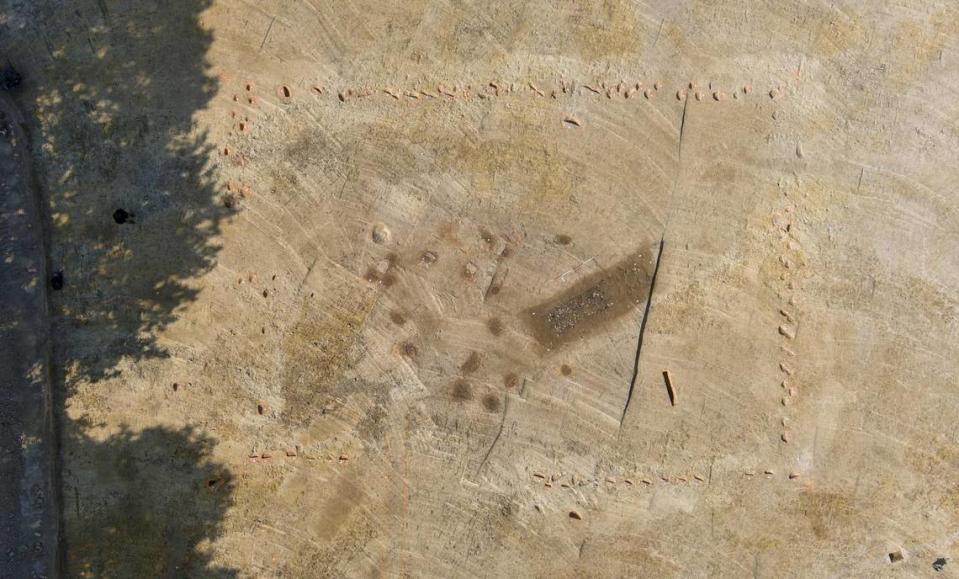2,100-year-old cemetery — with rare cremation burials — unearthed in France. See it
Digging into the dry, brown soil in northwestern France, archaeologists uncovered the usual traces of ancient life. The finds were relatively mundane — until they dug up the local cemetery and found something rare.
Archaeologists were excavating an Iron Age settlement in the town of Pleumeleuc when they found the rare burials, the French National Institute for Preventive Archaeological Research (Inrap) said in an Aug. 22 news release.
The small cemetery is at least 2,100 years old, archaeologists said. It had a rectangular shape, and remnants of a fence were also found nearby. In the center were burn marks and traces of fire. About 20 cremated burials and urns were unearthed.
Iron Age cemeteries with cremation burials are rarely found in this area of France, the release said. Photos show the cemetery from above and a close-up view of an urn.

During the Iron Age in France, burials tended to focus on the individual, according to Inrap. The deceased’s body was buried in a tomb or a mound with a variety of jewelry, weapons or other funeral offerings. The objects placed in the grave varied by the individual’s or family’s social status, officials said.
Cremation burials only began to grow in popularity toward the end of the Iron Age, Inrap said.

Archaeologists don’t know when the cremation cemetery in Pleumeleuc was used, the release said.
The nearby settlement was occupied by peasants from the sixth to the second century B.C., archaeologists said. The foundations of several houses have been unearthed along with pottery fragments, a goblet and a weaving tool. The settlement probably raised grazing animals or grew crops.
Archaeologists will continue analyzing the funeral artifacts to better understand the timeline of the site, the release said.
Pleumeleuc is about 220 miles southwest of Paris.
Google Translate was used to translate the news release and article from the French National Institute for Preventive Archaeological Research (Inrap).
1,800-year-old bones of a small ‘lap dog’ — a ‘much-loved pet’ — found at Roman villa
Bricks emerging from forest floor turn out to be rare 2,000-year-old Roman ruins
8,000-year-old encampment — with tridents and war paint materials — found in England

